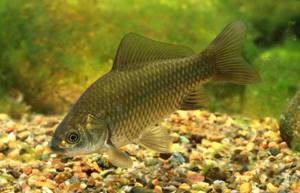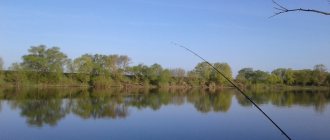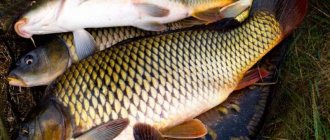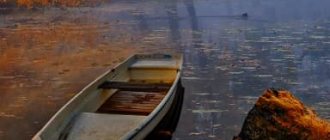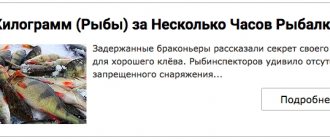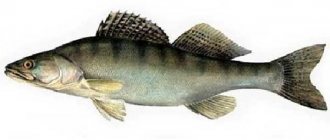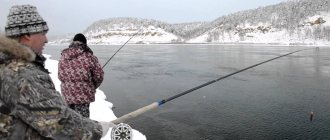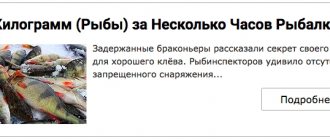The Voronezh region is famous for its fishing. On its territory there are about 3,000 freshwater lakes, and the number of rivers exceeds this value. The presence of a large amount of water resources makes the area attractive for lovers of active recreation and fishing.
Many places that are completely open to fans of free and paid fishing will always delight you with rich catches. And many fishing spots can be found not far from Voronezh itself, which the locals really like. For comfortable fishing, you don’t need to travel far from home.
What kind of fish is found in the Voronezh region
Fish species familiar to central Russia often delight fishermen in the Voronezh region. The catches here are rich, and the fish are quite large, so hardly anyone will be bored. The fisherman’s main task is only to choose the right place for fishing and prepare suitable gear. If you do everything correctly, your catch may include:
- Bream;
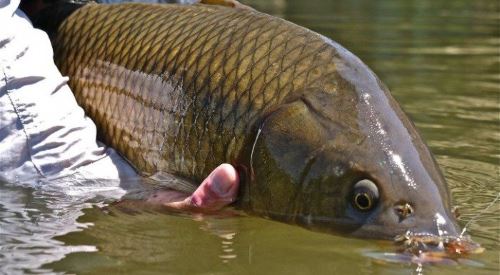
- Catfish;
- Biryuk;
- Chub;
- Bleak;
- crucian carp;
- Carp;
- Rudd;
- Perch;
- Roach;
- Carp;
- Pike.
As can be seen from the list, the species composition is quite wide, so any fisherman will be able to find entertainment on the shore of a reservoir. It doesn’t matter whether you like fishing with a float rod, fishing with a donkey or a feeder, or prefer to hunt predators with a spinning rod - there will always be something for you to do.
Shilovo is a popular place among fishermen
The Don near the village of Shilovo is one of the favorite places for fishermen in the Voronezh region. With a good approach to the water along a gently sloping bank, you can find quiet backwaters and areas of rapids, with riffles and holes after them.
Both peaceful fish and predators are successfully caught in Shilovo all year round. The main thing is to get to the right moment, choose the right tackle, and offer the fish appetizing bait and groundbait. There is another important point: finding a good place can be difficult, especially on a weekend. Therefore, it makes sense to leave in advance, or to join a friendly company for a joint trip.
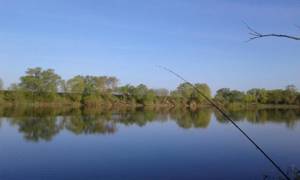
Map of fishing spots
The Don is undoubtedly the main water artery of the region, not only of Voronezh, but also of many neighboring ones. The diverse species composition of fish that inhabits the Don simply stuns some fishermen. More than 30 species of fish living in the river in the Voronezh region have been officially recorded and confirmed.
Pike, perch, pike perch, catfish, rudd, bream and carp are the most common fish in the reservoir.
Almost every fisherman dreams of catching Don pike perch, including local residents who do not refuse such a trophy. They catch it in the morning, but unlike other predatory fish, it can also be caught well in the dark. Summer fishing for pike perch with an overnight stay is common among local fishermen.
The Voronezh River is famous among local fishermen for its large number of pike, and its size is quite impressive. Catfish and pike perch are caught less often, but their population is less than that of the toothy predator. Jig and wobbler fishing predominate in this reservoir. Local fishermen fish with plastic baits in the shallows, and silicone fish are used for fishing in the depths.
Local spinning fishing enthusiasts often go to the Usmanka River in search of predatory fish. Ideal conditions for hiding a predator are created by banks overgrown with reeds, as well as hanging branches of trees, under which pike and perch most often hide.
Korotoyak is a popular fishing spot
Places in the vicinity of the village of Korotoyak have been explored by fishermen for a long time. For centuries, they have caught here the river giant - catfish, famous crucian carp and carp, weighty bream and biryuk, wary asp, silver roach, striped perch, silver bream, sabrefish.
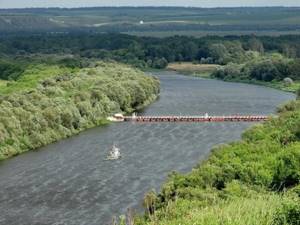
The Don here forms a bend reminiscent of a horseshoe. Starting from the place where Tikhaya Sosny flows into the Don and immediately after the bend, there are riffles so beloved by fish, and secret holes, and quiet backwaters. On sunny days, young peaceful fish scurry busily under the steep sandy banks favored by swifts. Predators willingly come to chase this little thing. Thanks to this, you can find almost all types of Don fish here.
Just as in former times, at dawn the fishermen occupy all possible places both above and below the village. Some with a spinning rod, some with a donkey, some with a feeder, they compete in luck and strive to get not just a fish, but a trophy-sized specimen. Using garlands of leashes, assorted feeders and baits, they strive to predict the mood and desire of capricious fish. The equipment you will need varies depending on the fish you are counting on and the location you choose.
The most purposeful use modern means such as electronic quok, which attracts catfish as effectively as bait attracts white fish.

Free fishing spots in the Voronezh region
The Kirpichnaya River flows not far from the village of Shchuchye. But for fishing, it is precisely that section of the reservoir where it flows into the Don that is interesting. There are quite a lot of holes in which catfish live. A worm and a clam will be the best bait for bottom fishing for the river giant.
Lake Bogatoye is located near the town of Leski; if you are going fishing by car, then drive to the reservoir on the western side, where you will be pleased with the clean and sandy shore. Most often, fishermen manage to catch crucian carp, roach, perch, carp and bream. The entire shore of the reservoir is completely open for free fishing.
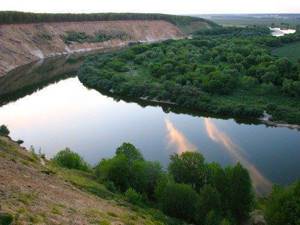
River Don
The Usmanka River is considered one of the quietest, calmest and most beautiful places for fishing in the region. This is simply an irreplaceable place for those who want to relax in nature with the whole family. There is something to do here for both fans of spinning fishing and float fishing.
There is a very promising place for fishing on the Devitsa River; it is located not far from the bridge with Belazy. Chub, rudd and roach are caught continuously throughout the spring and summer. Moreover, very often you come across weighty individuals. There is also a sufficient amount of large perch and pike in the reservoir.
Briefly about baits for catching pike perch
Over the past years of fishing for pike perch on the Don with a spinning rod during the cold period, I have become completely convinced that pike perch always feeds in December-February, and does not wait for the complete digestion of its prey.
During the winter months I never came across him with an empty stomach. This observation once helped to adjust the technique of catching pike perch and switch to small, 7-8 cm (length with straightened tail) twisters. But small silicone baits quickly die in cold water at this time. Their tails vibrate worse and sometimes stick.
In a good game, even an expensive silicone bait is enough for two or three wires, and then they need to be warmed up in the chest pocket for at least fifteen minutes. To slightly increase the “working time” of the twister, I decided to add pieces of river fish fillet. It turned out that this trick adds to the catch when the pike perch is interested in the “long step”.
Simply put, when the time the jig head falls to the bottom is more than four seconds. For some time now, until today, I only use cutting with vibrating tails (8-12 cm). They can plan longer in the thread. I cut the belly of an excessively wide vibrotail, and then it begins to roll from side to side, reminiscent of a wobbler in its movement.
From the second half of March, fillet additions are no longer necessary. At this time, pike perch from the Tsimlyansk Reservoir rises to Voronezh, and the pre-spawning feast begins. Wobblers do not catch pike perch on the Don in winter.
But from the end of March until the high water, “minoshkas” can already surpass jigs in the size of trophies both when fishing from a boat and from the shore. In the case of wobblers, in my opinion, it is better to do this. We cast them from the water only three or four times. We drive the wobbler slowly, evenly, sometimes adding acceleration with a slight jerk.
If you catch a pike perch using a wobbler, we put the soft plastic aside until the next point. No - we switch to twisters and vibrotails. In another place we begin to fish with the bait that we caught earlier, and do not waste time on experiments.
Fishing from the shore with wobblers is somewhat more difficult. First you need to decide on a place. And although you can throw them anywhere, the only typical and promising points are a wide pool with flooded bushes and a breaker stream from a small toe.
Here it is technically impossible to fish with a jig - the shore is shallow, and you simply won’t get a high-quality step, but you definitely (!) need to fish the coastal area before casting towards the fairway. Of the inexpensive wobblers in the spring on the Don, the Rapala Husky Jerk 10 DD and Smithwick rogue most often brought me success; the more expensive ones were the Lucky Craft SK Jerk 100 D2 g and the Lucky Craft Flash Minnow 95 Tr. These models of wobblers did not appear in the arsenal by chance.
They catch pike perch well even in warm weather. And if we talk fundamentally about spring fishing with wobblers, then the approach to choosing a wobbler model is simple - it should be caught during the autumn feeding period for pike perch. By the way, near Voronezh, fishing for pike perch using wobblers is not very common due to the fact that there are often dead hooks in the pike perch intervals of the river.
In March, large schools of bream come to Voronezh. They immediately make themselves known by clinging to the braid with their backs, tearing off the tails of twisters and leaving mucus and scales on the gear. The pike perch leaves its place while feeding the bream, and when they leave, it returns again. Therefore, it is reasonable to retrain as a leschatnik for an hour and a half. Instead of 18-28 gram “pike perch” jigs, we use thin braid and 6-14 gram baits equipped with “streamer” doubles. bream is not afraid of “Cheburashkas” of this weight, and with hooks of this type there are almost no idle bites.
Habitats of crucian carp and its features.
This type of fish is very common in various reservoirs of our continent. It can be found both in small ponds with stagnant water and in rivers with fairly strong currents. It should be noted that this fish prefers to be in places with muddy water or in thickets, and generally stays as close to the bottom as possible. Every fisherman should know that this fish moves around the reservoir very carefully, most often in small schools, and large individuals usually prefer to move alone.
I would also like to say about the unpretentiousness and adaptability of this fish to its living conditions. For example, if a reservoir dries up in the summer or freezes in the winter, then it simply buries itself in the silt and goes into suspended animation. Crucian carp can remain in this state for quite a long time until conditions in the reservoir improve. Also, individuals of this species can bury themselves in silt if the oxygen level in the water drops to critical.
I would also like to note that not all individuals of this species go into hibernation; some large specimens do not fall asleep, and this applies not only to artificially heated reservoirs, but also to some rivers and reservoirs. And it continues to be caught, albeit very reluctantly, even during severe frosts. And with the onset of spring thaws, it looks for places on a reservoir with warmer water. Well, when the ice completely melts and the spring sun begins to warm up, he prefers to stand on the shallows of reservoirs, where there are no shadows falling from the trees.
The spawning period for crucian carp begins in the spring, when the water warms up to 10 degrees. At this time, the bite begins throughout the reservoir, both at depth and in the shallows. This fish usually spawns in places with a lot of vegetation. And individuals who have reached 3–4 years of age have the ability to reproduce. Every angler should know that crucian carp stops biting during spawning, and the absence of biting also lasts for about 7 to 10 days after the end of spawning. Since the fish regains strength after spawning.
After 7 - 10 days after spawning, the summer period begins in the life of this fish. They feed on plant foods, detritus, zoobenthos, small invertebrates and zooplankton. He tries to protect himself as much as possible from appearing in places with little depth, going to places where there are deep holes and a lot of reeds. If you are on a river, then crucian carp can be found in bays or places with very weak currents, overgrown with grass.
If you want to attract the attention of crucian carp, then you should feed in places that are close to the grass, but in no case in open water. Many fishermen even make bridges next to the vegetation or break through small islands in the middle of it and cleverly feed these spots, thereby camouflaging themselves very well from fish looking for food.
What baits and baits should be used to catch crucian carp at different times of the year.
I would also like to talk about the bait that should be used to catch this tricky one. Of course, there are many recipes and there is probably no specific one hundred percent option, but I still want to tell you a few recipes that have been used with success.
One of them is suitable for both feeder and donkey fishing lovers, and for fans of float rods. This recipe is very simple and inexpensive. It consists of only two ingredients: flour and millet.
We make bait based on the ratio of water to millet as two to one, that is, for four glasses of water we will add two glasses of millet. First, we pour four glasses of water into a saucepan and bring to a boil, then add millet to the boiling water and stir until the water boils. When the water has boiled away, you can turn off the fire and start adding flour to the millet. One thing to keep in mind though! if you fish with a float rod, then you can add more makukha, that is, from about one and a half to two glasses, but if you fish with a bottom rod, in principle it will be enough to add from a glass to one and a half. After you thoroughly mix the contents, let it sit for fifteen minutes and your bait is ready. Very easy and fast.
In the following recipe, we will use store-bought bait as a basis; it is recommended to use boiled corn or millet as a filler; breadcrumbs or sunflower cake can be used as a leavening agent; and unrefined sunflower oil, anise or garlic can be used as a natural flavoring. All these pungent aromas are very attractive to crucian carp.
If the bait for crucian carp can be different, then the bait should be chosen depending on what the crucian carp eats in a given body of water, but there are still several generally accepted rules at different points in the season:
- When fishing in early spring, you can use maggots, a small worm or bloodworms as bait. The crucian carp will not treat itself with these delicacies.
- When spawning time approaches, baits containing a large amount of protein should be added to the diet. Such as protein dough or small boilies.
- Well, after spawning, this fish is very selective and you need to have the maximum number of baits in your assortment, because no one knows whether it will bite today or tomorrow.
- In the summer, canned corn, small boilies, wheat and pearl barley come to the fore. Well, if they don’t work, then you can try maggots or a worm. Well, if after trying all these baits you didn’t get any results, then try making a small mix, try using pearl barley along with a red worm, usually this composition helps to achieve a good result.
Places for catching crucian carp in Voronezh and the Voronezh region.
Voronezh and the Voronezh region have a huge number of rivers, lakes and ponds. The capital of the black earth region is truly rich in water resources. One of the largest rivers in Russia, the Don, is also present here, the Voronezh River, which became the city-forming one thanks to the construction of a dam and the subsequent formation of the Voronezh reservoir, which supplies water to the entire city. Also worth noting are rivers such as Khoper, Khava, Bityug, Usmanka and other relatively small rivers that run through the entire Voronezh region. Along with the rivers, there is a huge number of lakes and ponds, some of them are paid, for example, such as the Yuzhny Pond, the pond in the village of Seventy, the Laptevsky Pond at the sports and fishing base Serebryany Klyuch and others. But along with paid ones, there are also free ponds, such as Krylovsky Pond, Moskovsky Pond, a pond outside the village of Verkhnyaya Katukhovka, by the way, it should be noted that here there are two ponds nearby, paid and free, and they are literally across the road from each other. If you are driving from Voronezh along the Tambov highway and turn left, then about 400 meters away you will see a small paid pond, and if you turn right, you will see a fairly large free pond of the former fish farm.
Fishing for crucian carp on the Voronezh reservoir.
I would like to mention several favorite places at once, on the Voronezh Reservoir, where fishermen catch huge quantities of crucian carp from year to year. One of them is the spillway at the dam. This is perhaps the most popular place in our city, plus you don’t have to travel far. In the spring, and in general in the summer, crucian carp bite here regularly; you come across very good specimens per kilogram in weight.
It is also worth noting such places as a fairly large backwater in Maslovka, where crucian carp also bite regularly. But we must not forget the islands in the Otrozhka area behind the railway bridges, which are also very popular with local fishermen.
Fishing for crucian carp on the Don River.
Of course, we must not forget about the largest river in the Voronezh region, the Don. In which there is simply a huge number of species of fish, including crucian carp.
Fishing for crucian carp on a paid pond near the village of Znamenka, Kursk region, Gorshechny district.
Not all anglers want to fish near the city or right in it, so as not to travel far. A large number of fishing enthusiasts prefer to travel. If you consider yourself one of these, then it’s worth trying to go to a paid reservoir in the village of Znamenka, Kursk region, Gorshechny district. The drive is relatively close, only 130 kilometers from the city of Voronezh, so you can get there in just a couple of hours with ease, I leave the South-Western region of the city of Voronezh and move along the Kursk highway until the turn to Gorshechnoye, there we pass the pot in a straight line and move until the turn on Beketovsky, passing Gerasimovo, then in a straight line until the sign. There is a beautiful pond here with excellent crucian carp.
